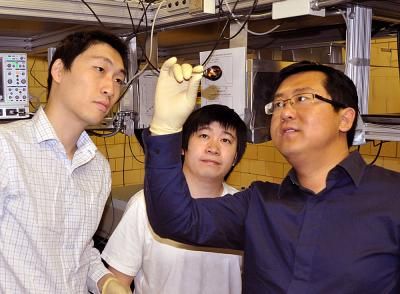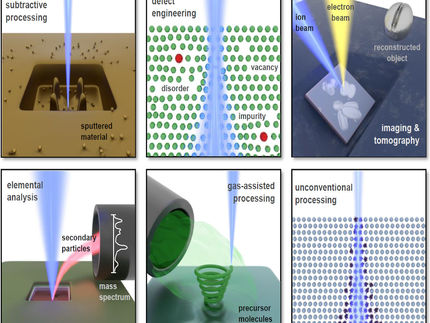New self-stretching material developed
No limit to number of times material can change shape
Although most materials slightly expand when heated, there is a new class of rubber-like material that not only self-stretches upon cooling; it reverts back to its original shape when heated, all without physical manipulation.
The findings were recently published in the journal ACS Macro Letters.
The material is like a shape-memory polymer because it can be switched between two different shapes. "However, unlike other shape-memory polymers, the material does not need to be programmed each cycle--it repeatedly switches shapes, with no external forces, simply upon cooling and heating," said Mitchell Anthamatten, an associate professor of chemical engineering.
Anthamatten and his team built on the success of a recently developed polymer that can also stretch when cooled. The other polymers need to have small loads--or weights--attached in order to direct the shape to be taken. That is not the case with the Rochester polymer, because Anthamatten's team "tricked it into thinking" a load was attached.
To carry out their strategy, the researchers introduced permanent stress inside the material. They began with polymer strands that were loosely connected by bonds called crosslinks that create a network of molecules. The material was stretched with a load attached to give it the desired shape. At that point, they added more crosslinks and cooled the polymer, causing crystallization to occur along a preferred direction.
Anthamatten's team showed that internal crystallization forces are strong enough to stretch the material along one direction. Once cooled below about 50 °C, polymer chain segments pack into highly ordered micro-layers called lamellae. This reorganization occurs within a network of polymer chains, causing the material's length to increase by over 15 percent.
"The stress we built into the network takes the place of the load and enables the material to 'remember' the shape it will assume when it's later cooled without a load," said Anthamatten.
Conventional shape-memory polymers need to be reprogrammed after each cycle, but that's not the case with the material developed by Anthamatten and his team. After multiple cycles of cooling and heating, they found that the material assumed its programmed shape and returned to its initial state with no noticeable deviation.
Anthamatten envisions the material being applied to a number of areas in which reversible shape-changes are needed during operations, including biotechnology, artificial muscles, and robotics.
"The next step is to optimize the shape of the polymer material and the energy released during the process," said Anthamatten. "That will be done by adjusting the type and density of crosslinks that tie the individual chains together."
Most read news
Other news from the department science

Get the chemical industry in your inbox
By submitting this form you agree that LUMITOS AG will send you the newsletter(s) selected above by email. Your data will not be passed on to third parties. Your data will be stored and processed in accordance with our data protection regulations. LUMITOS may contact you by email for the purpose of advertising or market and opinion surveys. You can revoke your consent at any time without giving reasons to LUMITOS AG, Ernst-Augustin-Str. 2, 12489 Berlin, Germany or by e-mail at revoke@lumitos.com with effect for the future. In addition, each email contains a link to unsubscribe from the corresponding newsletter.
Most read news
More news from our other portals
Last viewed contents
Solutia Raises Prices for Saflex(R) and Vanceva(R) PVB Films




























































